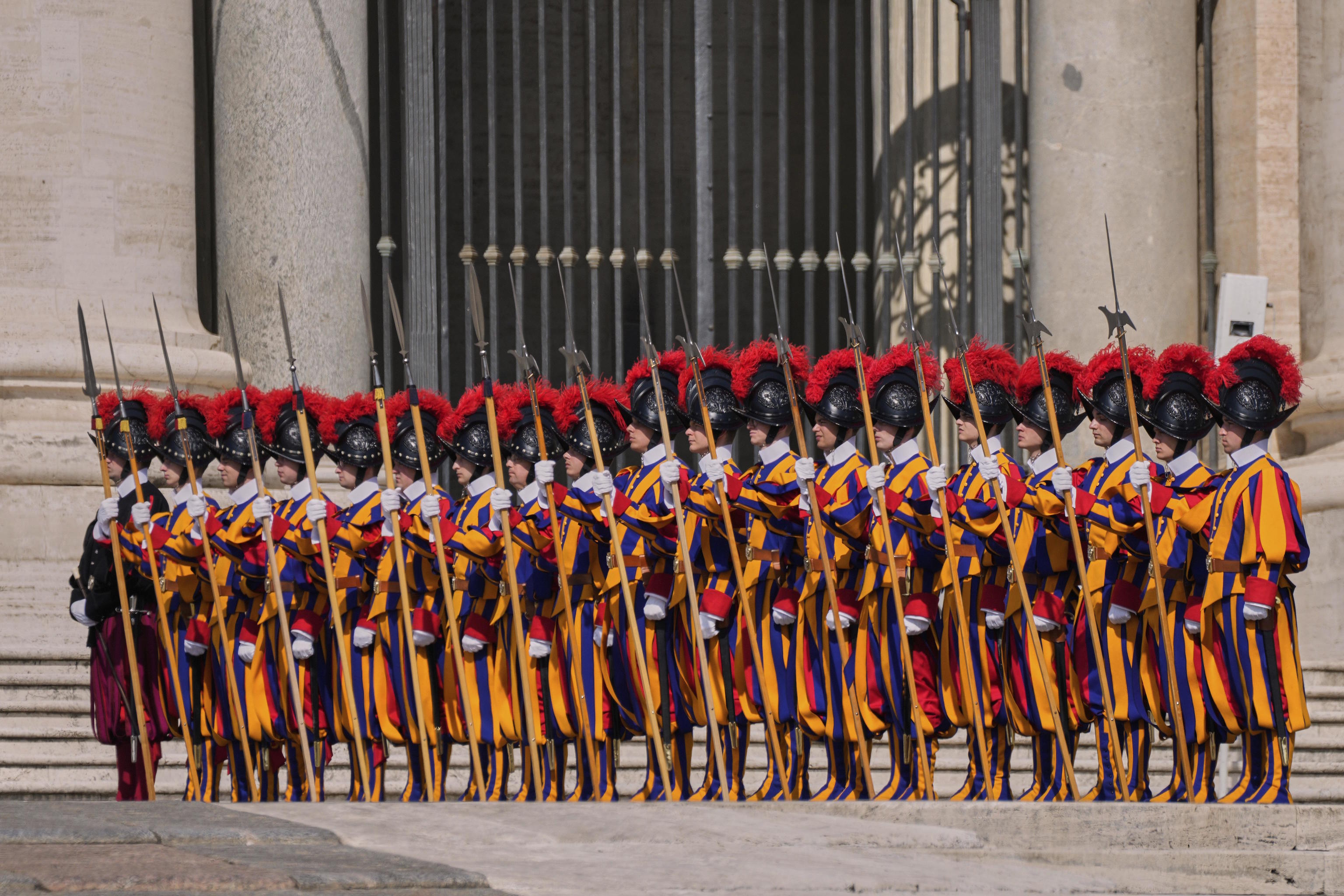Thirty Swiss men, Catholics, aged between 19 and 30, with the four months of military service in Switzerland completed and a minimum height of 1.74 meters, were waiting for what was supposed to be one of the most important days of their lives yesterday, something that the Pontiff's death has postponed. On May 6, they were scheduled to swear in as new members of the Swiss Guard, the smallest army in the world, the same one that protects the Pope even with their lives if necessary. The ceremony, which commemorates the Sack of Rome by the German and Spanish troops of Charles V on May 6, 1527, in which 147 of the 189 guards at that time died defending Pope Clement VII, will have to wait until next autumn, still without a fixed date.
While the recruits await their moment, their veteran companions continue to work. Beyond their striking uniforms, dating back to the Italian Renaissance, and their imposing halberds and helmets, their silent presence has been a constant in all events held since the death of Pope Francis on April 21. The Vatican has been in what is called sede vacante since then, until a new successor to St. Peter is chosen. From that moment on, the guards depend on the College of Cardinals under the authority of the camerlengo, Irish Cardinal Kevin Joseph Farrell.
The members of the Swiss Guard are also responsible for the security of the 133 cardinals who gather starting today in the Sistine Chapel, secluded from the world, and who will choose the new Pontiff in a conclave where favorites are already being mentioned, but a clear name has not yet emerged due to the great diversity among the electors. The colonel and a major of the Swiss Guard are responsible and have had to swear strict confidentiality, never to reveal what they see or hear under the risk of excommunication.
The discipline of this small army that controls the half square kilometer of the Vatican is very strict, their training is military, and they undergo a month of training in anti-terrorist techniques with the Swiss police special forces. Their country of origin covers half the cost of their training. When dressed in a common black suit, which is how they leave Switzerland, they serve as the Pope's bodyguards and accompany him on official trips. The ceremonial uniform, the most well-known, is tailored by a tailor in the Vatican, consisting of 150 pieces and requiring about 40 hours of work.
Their worst recent experience and most notable mistake was the 1981 assassination attempt by the Turkish Ali Agca, then 23 years old, against John Paul II in St. Peter's Square, when four shots nearly cost Pope Wojtyla his life.
Until 2015, it was composed of 110 members, but that year their number increased to 135 due to the additional services entrusted to them, as recounted in the German DW documentary The mysterious army of the Pope, which follows the steps of Leo, a young recruit, from his farewell from his home in Fribourg, in French-speaking Switzerland, to the oath in St. Peter's Square before Francis a couple of years ago. After the oath, they have at least two years of service ahead of them, which can be extended, during which they can have a girlfriend but cannot marry until the fifth year if they continue in the Pope's service.
The origin of this army dates back to 1506, when Pope Julius II, who had been pontiff for three years, recruited a group of 150 Swiss mercenaries, who had a very good reputation, as his personal guard. According to José Manuel Rodríguez García, professor of Medieval History at UNED, the reputation of these mercenaries was already well-known by the late 14th century "for being a specialized group of pikemen and halberdiers, capable of defeating the cream of feudal cavalry."
"Their success - explains this expert - lay in their closed formation of long pikes, perfect for facing heavy cavalry. But for this, they needed strong people with a great sense of tactical discipline, which was provided by their esprit de corps and proper training." Their star began to decline in the second half of the 16th century, "with the increasing introduction of individual firearms on the battlefield," something in which the Spaniards excelled.
As Professor Rodríguez recounts, it is important to consider that the Papacy of that era "behaved more like a territorial lord than the head of Christianity" and, due to the weakness of its territorial base, both geographically and politically, "it needed recognized forces that depended solely on him, that were his personal guard, and that he could deploy on the battlefield on occasion." "It was not the first or the only guard that the Pontiffs of the Modern Age had, but it is the one that has endured to this day," emphasizes this specialist.
